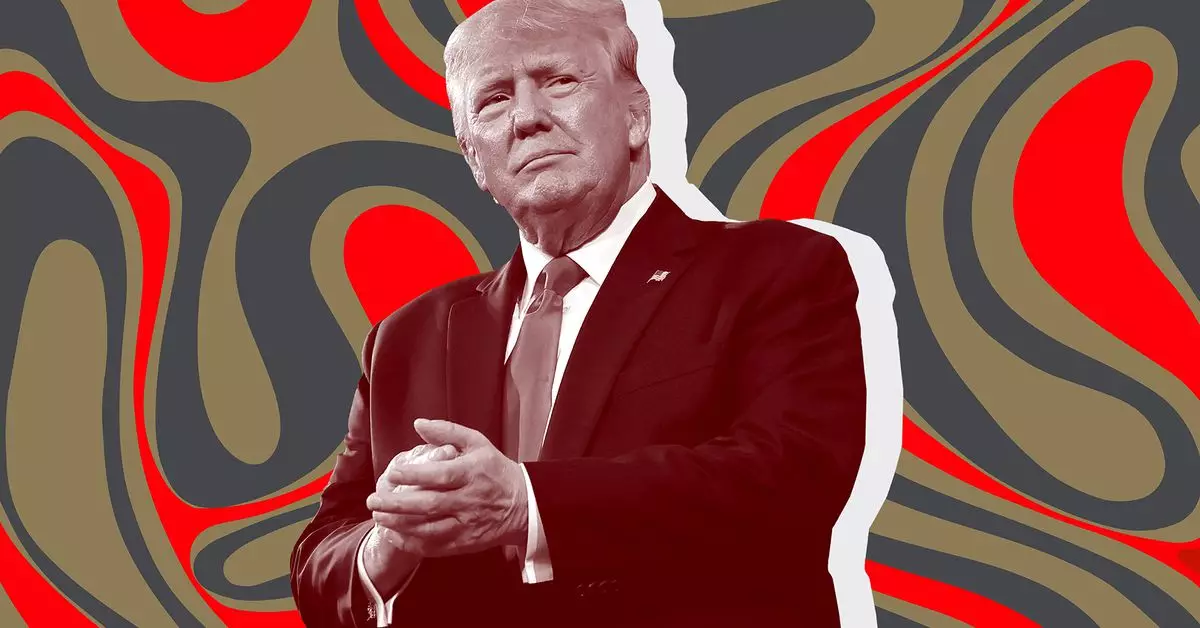Former President Donald Trump’s cryptocurrency initiative, World Liberty Financial (WLF), faced an explosive debut on Tuesday when the token sale for its WLFI token attracted unparalleled attention, leading to a sudden crash of its website. The fervor surrounding this new decentralized finance (DeFi) project was alarmingly high, with co-founder Zach Folkman announcing that more than 100,000 individuals had signed up to participate prior to the sale. The initial white-listing phase, which opened its doors to accredited investors and individuals outside the U.S. on September 30, established a bustling environment for a product that remains relatively ambiguous in terms of delivery and application.
As soon as the website went live, it was inundated with excessive traffic due to the high expectations set by Trump and his affiliates. Sandy Peng, an advisor for WLFI, corroborated that the website’s unavailability was attributed to a staggering surge of 72 million unique visits within just the first hour. Such overwhelming interest—while potentially indicating a strong market demand—also raised eyebrows regarding the project’s infrastructure and preparedness for such an influx.
Despite the crushing popularity at launch, the reality of WLFI’s distribution tells a different story. Blockchain data from Etherscan reveals that only 5,317 unique wallet addresses were found to hold the WLFI token by Tuesday afternoon, a stark contrast to the overwhelming registrations claimed just a day prior. It had been reported that more than 532 million tokens were sold out of a total of 20 billion allocated for public sale. This disparity indicates that, while many were interested, actual engagement may have been limited, either by investor conversion rates or unforeseen technical hitches.
The WLFI token, which currently is non-transferrable, was touted as a governance tool for users on the World Liberty Financial platform. Token holders will have a stake in decisions ranging from protocol modifications to oversight of technical changes and promotional partnerships. However, skepticism remains regarding the actual utility of this governance structure, particularly as the initial user base is likely constrained to accredited investors, a category that demands both a high income and significant net worth.
One of the most significant points of contention surrounding the WLFI token sale is the regulatory framework under which it operates. Encouragingly pitched as a resource for the unbanked and de-banked populations, its accessibility is severely limited. To qualify as an accredited investor in this context, individuals must meet specific financial criteria, which restrict involvement primarily to wealthy individuals. This highlights a profound disconnect between the rhetoric of financial inclusivity and the practical implications of the project’s infrastructure.
The World Liberty Financial team released a “gold paper,” designating Trump as the “chief crypto associate,” while listing his sons, Eric, Donald Trump Jr., and Barron Trump, as “Web3 Ambassadors.” This connection to the Trump name may enhance publicity and draw attention, however, it simultaneously raises concerns about the transparency and accountability of the project.
Furthermore, the document clarifies that WLFI tokens are “NOT AVAILABLE FOR U.S. PERSONS,” and “HAVE NOT BEEN REGISTERED WITH ANY U.S.” authorities, signaling potential legal ramifications that could arise from overstepping regulatory boundaries. The project’s ambition to bridge financial gaps must tread carefully in a landscape fraught with regulatory scrutiny, particularly given the significant implications of securities law violations.
As World Liberty Financial navigates its early stages, the success of its venture hinges not only on resolving current technological shortcomings but also on addressing the nuanced implications of regulatory compliance. Future token holders and potential investors will be keeping a close eye on how this project evolves in terms of platform functionality and accessibility.
The launch of WLFI has undeniably stirred interest in the cryptocurrency market, thanks largely to the controversial Trump identity attached to it. However, the true test will next unfold in the realm of practicality and user engagement. Will World Liberty Financial be able to translate hype into real-world use cases? Only time will tell. As the cryptocurrency landscape continues to expand, projects like WLFI require rigorous oversight and a commitment to transparency to maintain their credibility and viability in an ever-challenging financial ecosystem.


Leave a Reply